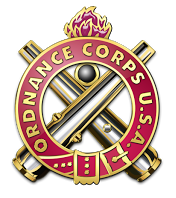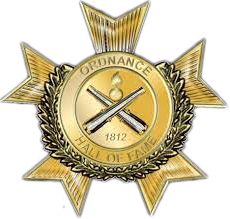The Ordnance Corps Hall of Fame was established in 1969 to recognize and memorialize persons who have made a positive, significant contribution to the U.S. Army Ordnance Corps.
Since its inception, the Hall of Fame has grown not only in membership, but also in its value to the Ordnance Corps. In addition to giving permanent recognition to those personnel who have made significant contributions to the Ordnance mission of the U.S. Army, it preserves a substantial amount of historical information about the Ordnance Corps and its distinguished contributors.
Promotion of greater awareness is one of the goals of the Ordnance Corps Hall of Fame. Since before the Civil War, the members of the Hall of Fame, through technological advances rarely dreamed of by man, served their country and the Ordnance Corps proudly. Looking briefly at the accomplishments of only a few distinguished members, it is easy to see the vast contributions made to the Ordnance Corps. From the development of small arms to the exploration of rocket propulsion, members of the Hall of Fame are remembered for their contributions.
In 1969, Mr. Robert P. Parrott, who invented the Parrott gun - the first rifled cannon - was inducted into the Hall of Fame. Mr. J.C. Garand, the inventor of the M1 rifle and Dr. Werhner Von Braun, whose work in the technical advancements of rocketry led to the liquid fueled rocket engine and ultimately to manned space flight were inducted in 1973. Mr. J.M. Browning, inducted in 1974, invented, perfected, and supervised the production of numerous small arms, and is responsible for the superiority in small arms weaponry enjoyed by the U.S. military forces today.. Mr. R. J. Gatling, the "Father of the Machine Gun" was also inducted in 1974. Walter J. Christie, inducted in 1975, invented the first amphibious tank and was a pioneer in the development of self- propelled artillery. The "Father of U.S. Rocketry", Dr. R. H. Goddard, was inducted in 1977.

